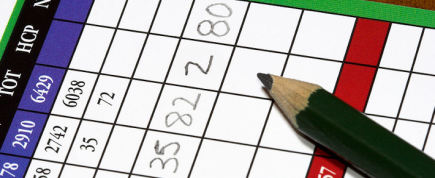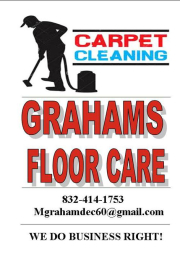CLICK ON SCORECARD PICTURE TO VIEW NEW USGA YOUR HANDICAP
MUST HAVE 3 ROUNDS TO ESTABLISH YOUR HANDICAP............. * ARE THE ROUNDS THAT ARE INCLUDED INTO YOUR HANDICAP..... ONLY YOUR TOP SCORES ARE CALCULATED.
SCAN OR CLICK ON THE PICTURE TO DOWNLOAD MOBILE APP
What You'll Need for the Handicap Formula
What numbers do you have to have in order to perform the handicap index calculation? The formula requires the following:
- Your scores - a minimum of five and up to 20. And these are your adjusted gross scores (meaning they follow the equitable stroke control per-hole maximums).
- The USGA course ratings of the golf courses you've played.
- The USGA slope ratings of the courses you've played.
Have all that? OK, we're ready to get into the math of the handicap formula.
Step 1 In Handicap Formula: Calculate the Differentials
Using your adjusted gross scores, the course ratings and slope ratings, Step 1 is calculating the handicap differential for each round entered using this formula:
(Score - Course Rating) x 113 / Slope Rating
For example, let's say your score is 85, the course rating 72.2, the slope 131. The formula would be:
(85 - 72.2) x 113 / 131 = 11.04
The sum of that calculation is called your "handicap differential." This differential is calculated for each round entered (minimum of five, maximum of 20).
(Note: The number 113 is a constant and represents the slope rating of a golf course of average difficulty.)
Step 2: Determine How Many Differentials To Use
Not every differential that results from Step 1 will be used in the next step.
If only five rounds are entered, only the lowest of your five differentials will be used in the following step. If 20 rounds are entered, only the 10 lowest differentials are used. Use this chart to determine how many differentials to use in your handicap calculation.
|
Number of Differentials Used |
|
| Rounds Entered | Differentials Used |
| 5-6 rounds | Use 3 lowest differential |
| 7-8 rounds | Use 4 lowest differentials |
| 9-10 rounds | Use 5 lowest differentials |
| 11-12 rounds | Use 6 lowest differentials |
| 13-14 rounds | Use 7 lowest differentials |
| 15-16 rounds | Use 8 lowest differentials |
| 17 rounds | Use 8 lowest differentials |
| 18 rounds | Use 9 lowest differentials |
| 19 rounds | Use 9 lowest differentials |
| 20 rounds | Use 10 lowest differentials |
Step 3: Average Your Differentials
Get an average of the differentials used by adding them together and dividing by the number used (i.e., if five differentials are used, add them up and divide by five).
Step 4: Arriving At Your Handicap Index
And the final step is to take the number that results from Step 3 and multiply the result by 0.96 (96-percent). Drop all the digits after the tenths (do not round off) and the result is handicap index.Or, to combine Steps 3 and 4 into a single formula:
(Sum of differentials/number of differentials) x 0.96
Let's give an example using five differentials. Our differentials worked out to (just making up some numbers for this example) 11.04, 12.33, 9.87, 14.66 and 10.59. So we add those up, which produces the number 58.49. Since we used five differentials, we divide that number by five, which produces 11.698. And we multiply that number by 0.96, which equals 11.23, and 11.2 is our handicap index.
CALLAWAY SYSTEM
The net scores for all players can be compared to see who will win the
tournament prize. Use the table below to calculate your Callaway handicap. First, look up your gross score on the left side of the table, and find how many holes you will need to use to calculate your handicap.
| The Callaway System |
| Gross Score | Handicap Calculation | |||||
|---|---|---|---|---|---|---|
| - | - | 70 | 71 | 72 |
Scratch |
|
| 73 | 74 | 75 | - | - | 1/2 worst hole score + adjustment | |
| 76 | 77 | 78 | 79 | 80 | Worst hole score + adjustment | |
| 81 | 82 | 83 | 84 | 85 | 1 1/2 worst hole scores + adjustment | |
| 86 | 87 | 88 | 89 | 90 | 2 worst hole scores + adjustment | |
| 91 | 92 | 93 | 94 | 95 | 2 1/2 worst hole scores + adjustment | |
| 96 | 97 | 98 | 99 | 100 | 3 worst hole scores + adjustment | |
| 101 | 102 | 103 | 104 | 105 | 3 1/2 worst hole scores + adjustment | |
| 106 | 107 | 108 | 109 | 110 | 4 worst hole scores + adjustment | |
| 111 | 112 | 113 | 114 | 115 | 4 1/2 worst hole scores + adjustment | |
| 116 | 117 | 118 | 119 | 120 | 5 worst hole scores + adjustment | |
| 121 | 122 | 123 | 124 | 125 | 5 1/2 worst hole scores + adjustment | |
| 126 | 127 | 128 | 129 | 130 | 6 worst hole scores + adjustment | |
| 131 | 132 | 133 | 134 | 135 | 6 1/2 worst hole scores + adjustment | |
|
-2 |
-1 |
0 |
+1 |
+2 |
Adjustment factor for handicap |
|
- Worst scores cannot be used from the 17th and 18th holes (it is too easy to
throw the last few holes if a golfer is ahead) - For any worst score that is greater than twice the hole par value, only
twice the par value should be deducted (in the spirit of ESC) - Once the scores are added up, round up any fractions to the next higher
number (e.g. a 7 on a par five that counts as half a worst score should be
rounded up to a 4)
Finally, adjust the sum of those scores by the
adjustment factor. To find the adjustment factor, look up your score in the
above table. At the bottom of the table, in the same column, is the adjustment
factor. If your sum of worst holes is 18, and your gross score is 89, than your
adjustment factor is +1 and your Callaway handicap is 19.
Your net score
is simply your gross score minus your Callaway handicap (in the above example,
your net score is 89 - 19 = 70).
Here is an example: Imagine a Callaway
tournament where you shoot a 95. You look up in the table and find that your
Callaway handicap is your 2 1/2 worst scores plus an adjustment factor of +2.
Your four worst scores are an 8 on a par 5, a 7 on a par 5, a 7 on a par 4, and
a 7 on a par 3. But, your worst score, the 8, took place on the 17th hole and
therefore cannot count towards your Callaway handicap. In addition, because your
7 on the par 3 is more than twice the par value, it can only count as a six
towards the Callaway handicap. The resulting handicap is 7 + 7 + 6/2 + 2 (Adj
Factor) = 19. Your net score is 95 - 19 = 76.
SOCIAL MEDIA
<< New text box >>
53 MONROE AVENUE
MEMPHIS TN 38103
901-235-9315
FAX : 901-672-8068
HENRYHUDSON@ALLSTATE.COM
hudsonagencyinsurance.com
1231 SPACE PARK DR
HOUSTON,TX 77058
334-478-8002
GABE LEYVA
FABSERVE LLC
144 CR 2122 LIBERTY, TX 77575
832-429-8704
WWW.FABSERVETX.COM
koalakare-llc.com
koalakare.info@yahoo.com
713-205-6294
LONNIE KNOWLES
ATTORNEY AT LAW
<< New text box >>
936-443-2938
Where to Find Us
HOUSTON GOLF LEAGUE
2250 HOLLY HALL 278
HOUSTON TX 77054
HOME:
832-231-7177
E-MAIL:PLAY@
HOUSTONGOLF
LEAGUE.ORG
OR HOUSTONGOLFLEAGUE@
HOTMAIL.COM
NEW FACES 2024






























